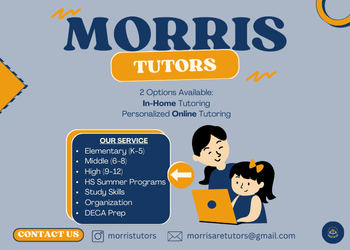MOUNTAIN LAKES — When you walk into the Mountain Lakes Public Library’s Makerspace, you can immediately sense the energy of creation with 3D printers humming, prototypes scattered across tables, and shelves lined with colorful projects made by students ranging in ages from kindergarten to high school. At the center of this activity is Ian Matty, the director and co-founder of the Makerspace program, whose vision has transformed a small idea into a thriving community hub for creativity.
Around a decade ago, Mr. Matty’s involvement began with a simple goal: finding a chess program for his sons. When none existed, he partnered with the Mountain Lakes Board of Education to start a chess group at Wildwood, which grew quickly in popularity.
During this time, he met Nish, an engineer who shared several of his robotics creations. The hands-on and approachable nature of these projects inspired Mr. Matty to introduce robotics to the chess group. In December 2016, he invited the students to spend an afternoon experimenting with robotics and craft materials. The results were surprising. Everyone was captivated by building, designing, and problem-solving.
Recognizing the potential, Mr. Matty’s wife, Christina, brought the idea to the Mountain Lakes Public Library. The library supported it, offering a small downstairs closet as the first Makerspace room. What began as a few robotics afternoons soon grew into a dedicated program focused on creativity, exploration, and accessibility for elementary-aged students. Ever since, the Makerspace has expanded into a nationally recognized program, dedicated to promoting creativity and collaboration. One of the defining features of the Makerspace is its philosophy. Instead of competition-focused STEM activities, the program emphasizes more activity-based projects and open-ended learning with no experience needed.
Today, the Makerspace operates as an official part of the Mountain Lakes Public Library. Its funding is supplemented by the Mountain Lakes Educational Foundation. A significant grant from the University of Colorado, awarded through the National Science Foundation, has supported the development of accessible products for people who are blind or have low vision. Around 50% of the Makerspace budget is dedicated to 3D design, one of the most versatile and accessible tools for creating adaptive and educational projects.
The Makerspace is known for its long-term, purposeful iniatives, many of which address accessibility challenges or community needs. Mr. Matty rarely singles out a single favorite. Instead, he focuses on the constant stream of new ideas students bring. These ideas turn into projects that often evolve over multiple years as new students add their own improvements.
Standout Projects
- Crayon Caps – originally created by student Andreana Lee and later refined by classmates Meaghan Donnelly and Richard He, these caps are made to assist the visually impaired in identifying crayon colors.
- 3D-Click™ – a universally designed tactile abacus featuring a rod-and-bead system that clicks into place to provide haptic and auditory feedback, which was developed in collaboration with Chi-Hoon Kim and the Clovernook Center for the Blind & Visually Impaired
- AltText Project – a team of local students worked with cartoonists Mika Song and Jen de Oliveira to create accessible alt text (a text description that can be read by a screen reader) for weekly webcomics; students produced around ten issues of their own.
However, not all projects are technology-based. One high school student, Conrad, created “Conrad’s Garden,” a long-term botany initiative that demonstrates the program’s openness to all areas of interest.
As the Makerspace continues to expand, its programs evolve along with the students who shape them. Whether developing new adaptive tools, experimenting with emerging technology, or designing entirely new types of projects, the Makerspace thrives on the steady flow of fresh ideas from students and the community.











